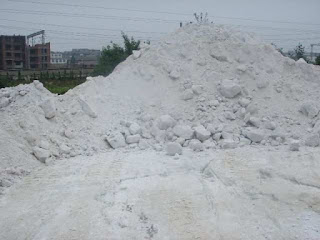Size control in crushing and grinding circuits
In the beneficiation plant, it is very important to control
the grain size in the stage of crushing and grinding. Especially in metal mines
such as iron ore processing line and gold mining equipment, grain size control
plays a decisive role in the subsequent stage of selection. A few typical
granularity control schemes and their characteristics are described below.
1.Crushing circuits - open
screening
• Screening ahead of a crusher avoids packing
• Less wear in the crusher
• Higher total capacity
• The screening media is “controlling” the product in two
dimensions. No “flaky shortcuts”.
Fig1. crushing-open
screening
2.Crushing circuits-closed screening
• The screens are lowering the capacity
• Calibration of the product is improved
• Better cubical shape
• Higher reduction ratio
Fig2.crushing-closed
screening
3.Grinding
circuits-screening
• Used for “trapping critical sizes” in AG - SAG circuits
(1)
• Used for taking out size fractions from AG circuits for
pebble grinding (1)
• Used in circuits with heavy minerals – avoiding over
grinding (fine screening) (2)
• Screens being static (fixed cut point) are not too
tolerant to changes in product size, causing variations in circulating loads.
• Mechanical damage or clogging of screening media can
disturb operation.
Fig3. grinding
circuits-screening
4.Grinding
circuits-classification
• Classifiers being dynamic (floating cut point) are more
tolerant to changes in product size as the cut point is moving with the changes
• Cyclones, being most common, are effective as classifiers
at cut points below 200 microns (1)
• Spiral classifiers are effective as classifiers at cut
points up to 800 microns. For the coarse fraction solids up to 50mm (2”) can be
removed by the spiral.
• Spiral classifiers and cyclones can be used complementary
if cut point is coarser than 200 microns. (2)
Fig4. Grinding
circuits-classification
5. Dry classifier system
A
typical dry classifier system is shown below.
Fig5. Dry classifier
system






评论
发表评论